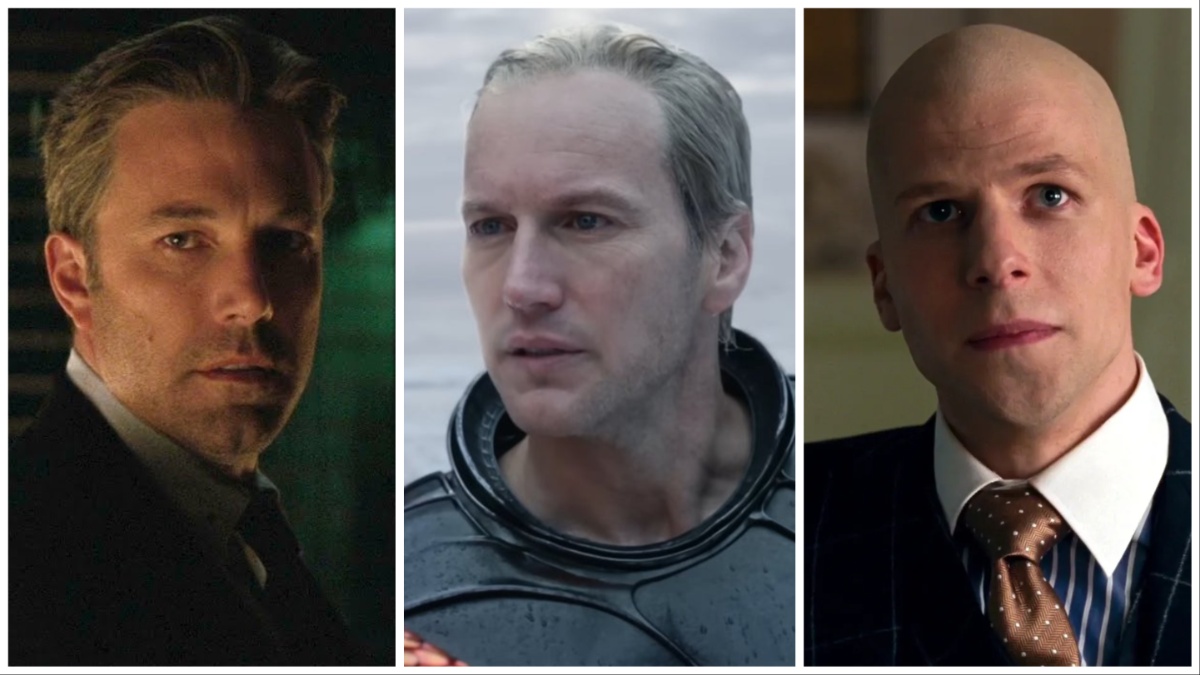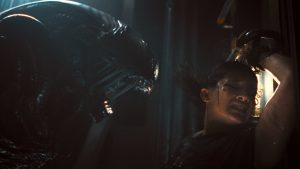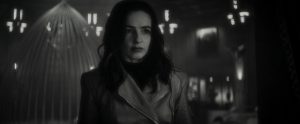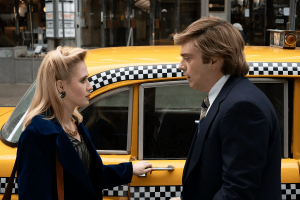
In hindsight, Marvel’s Infinity Saga ended up serving as an incredibly solid framework for a shared cinematic universe. Say what you will about the aftermath, but Marvel Studios spent the first few years building up to a big crossover in The Avengers, used it to hint at a bigger threat in Thanos, then spent the next several years worldbuilding and setting up a massive two-part climax. Whatever vision went into it paid off.
Part of that comes from the hype generated by mid and post-credits scenes. Starting with Nick Fury visiting Tony Stark to discuss “the Avengers Initiative” way back in 2008’s Iron Man, these segments usually did a great job setting up new movies and plot points before eventually paying them off. Gag scenes aside, these were the epitome of the shared universe concept working out, and there were very few post-credits scenes in the first three phases that came off as total duds.
Things did not work out so well for the DC Extended Universe. While various movies could stand on their own, the attempts to create a coherent universe crumbled due to so many creative disagreements and questionable decisions. The architecture was faulty, which is why it culminated in the rubble of Aquaman and the Lost Kingdom , the presumed final entry before James Gunn’s rebooted continuity.
If the MCU’s post-credits scenes illustrate how things went right then the DCEU’s post-credits scenes act as a map of how things went so very wrong. While we’re not going to cover every single one, such as Billy Batson speaking to a goldfish, let’s look at how the post-credits scenes really highlighted the DCEU’s implosion. Here are nine ignominious roads to nowhere.
Bruce Wayne Confronts Amanda Waller (Suicide Squad)
Man of Steel did little to suggest a bigger universe. Batman v Superman: Dawn of Justice did too much. Suicide Squad, for all its problems, had the right level of worldbuilding. The scene of Bruce Wayne and Amanda Waller meeting up is the closest thing we get to Nick Fury meeting Tony Stark. It does a great job pushing the world forward as we have a natural step toward the formation of the Justice League, the future of the Suicide Squad is put into question, and the possibility of the two teams colliding is put on the table.
All things considered, off to a good start.
The Legion of Doom (Justice League, Zack Snyder’s Justice League)
The creative direction forked bigtime when Joss Whedon took over the reins on Justice League. With the so-called Snyder Cut coming out years later, the contrast between the Whedon and Zack Snyder variations on the Lex Luthor/Deathstroke scene at the end really show a world of difference for what should be a simple conversation. Whedon’s take is very blunt and to the point. After a brief introduction, Lex Luthor flat out suggests a villain team to take on the Justice League.
Snyder’s isn’t as overt, but there is an alliance formed in a way that gives us more information about the characters, from Luthor conquering his lunacy to Deathstroke’s mysterious past with Batman. As Luthor tells Deathstroke about Batman’s secret identity, we not only have a natural path to a Justice League follow-up, but also the solo Ben Affleck Batman movie we never got.
The Future of Superman (Justice League, Zack Snyder’s Justice League, Black Adam)
Justice League ended up being the last real Superman movie. Think about how bizarre and wrong that is. Even stranger is that between Justice League (both versions) and Black Adam, we have three very different scenes that show us a new direction for Superman. The theatrical Justice League has him racing Flash, becoming the wholesome paragon people felt was missing in Snyder’s movies. Snyder’s version portrays him as an ominous threat who will one day help enslave Earth with his angry, glowing eyes.
Then there’s Black Adam, where Dwayne Johnson insists that Black Adam’s real rival is not Shazam but absolutely Superman. Hell, even the post-credits scene in Super-Pets from months earlier sets up the same confrontation with Johnson voicing Krypto, Black Adam, and Black Adam’s dog. Johnson made a big deal about the new power structure of the DCEU going forward, but of course nothing came of it other than an announcement shortly after that Warners was going in a different direction.
The blatant reluctance to connect Shazam and Black Adam will always be the funniest thing.
Sivana and Mr. Mind (Shazam!, Shazam! Fury of the Gods)
God, this pair is just infuriating. At the end of Shazam, Dr. Sivana was confronted with the evil caterpillar genius Mr. Mind. Considering how fantastic and weird the movie was, throwing someone like Mr. Mind into the mix as a future villain felt earned. As one of Shazam’s biggest enemies, Mr. Mind seemed like a perfect threat to develop in the next movie.
Maybe they wanted to make it like Thanos where he laid low in the second installment in order to make the third one seem bigger. Either way, they went with an uninspired set of villains for the sequel, and it became easily apparent while watching the movie that there would be no part three. So instead we got a comedic follow-up to remind us of how deflating this whole situation really is.
Mark Strong deserved better.
Lynda Carter is Asteria (Wonder Woman 1984)
Throwing Lynda Carter into the role of an Amazon who is more or less “prototype Wonder Woman” is a cute and fun idea. Wonder Woman 1984 has issues, but this isn’t one of them. In retrospect though, there is an unfortunate air to it. Not that it wouldn’t have happened without Carter’s 1984 cameo, but DC really zeroed in on that nostalgia when it came to their final make-or-break movie in The Flash. It was a movie that took a fun concept and exploited it to a desperate degree. No longer was the focus on the title character, but the return of Michael Keaton as Batman (not that Batman, but a Batman who happened to be played by Keaton).
Then again, Warner Bros. isn’t fully to blame for that one failing so spectacularly after Ezra Miller went Ezra Miller. Still, the studio was to blame for going all-in on the gross CGI ghosts during the multiverse collapse scene. Rein it in, guys.
Peacemaker and Weasel Survive (The Suicide Squad)
Few post-credit scenes paid off, but The Suicide Squad has two that do. Sort of. One showed that Peacemaker wasn’t killed from his battle with Bloodsport and would go on to star in his own adventure via the HBO Max TV series overseen by James Gunn. Congrats to John Cena for being the former WWE Champion capable of sticking a superhero landing.
In another scene, comedic cannon fodder Weasel was revealed to be alive and ran off into the night. With Gunn now overseeing the DC movies and connected shows for the foreseeable future, Weasel is set to reappear as an animated member of the Creature Commandos. Maybe it’s not a literal connection between projects, but it’s a thematic one.
Shazam and the Justice Society (Shazam! Fury of the Gods)
Compare this Shazam! sequel stinger with the scene of Waller and Bruce Wayne meeting and you’ll get a feeling of… what are we even doing anymore? In this scene, Zachary Levi’s Shazam is offered a spot in the Justice Society by Waller’s agents, and he spends the moment dismissing the team completely before shoehorning in an Avengers reference. It’s flat and pointless.
Reportedly, the original intent was for the actual Justice Society members to show up and offer the spot to Shazam instead of Peacemaker’s social circle. Dwayne Johnson apparently wanted it changed, however, in order to create more distance between Goku and Veget—I mean, Shazam and Black Adam. Well, at least the Rock won’t have to worry about those two crossing paths any time soon.
Flash Drinks with Aquaman (The Flash)
The scene of Barry Allen trying to give exposition to a very drunk Aquaman reeks of confusion, desperation, and a poor attempt at humor. Barry makes it clear that despite being in a movie featuring Ben Affleck, Michael Keaton, and George Clooney as the same person in different timelines, there is only one Aquaman actor. In other words, it seems to act as a plea to viewers to understand that despite all this reboot bullshit, Aquaman 2 remains unchanged. The events of the first movie totally happened no matter what!
Go see Aquaman and the Lost Kingdom! Does it still “count?” Sure! Maybe!
Orm’s Final Meal (Aquaman and the Lost Kingdom)
I didn’t want to include joke post-credit scenes here, but… man. What a finale. Not just to this movie, but to the whole cinematic universe. The fact that Aquaman was DC’s biggest box office hit, bigger than every single Batman movie, sounds surreal. And if you told somebody that 10 years ago, they would laugh in your face. They might laugh now! Regardless, it was a major success which led to an absolute shrug of a sequel as its continuity ran out of air.
That brings us to our final DCEU moment where Patrick Wilson’s Ocean Master, the villain from DC’s most financially successful movie, is shown eating a cockroach. Man. Fox’s X-Men universe ended on a thud with Dark Phoenix, but at least Magneto ended it by playing a dignified game of chess. It’s not like they ended it on him sharting himself.
See you at Superman: Legacy, everybody!
The post 9 “Important” DCEU Post-Credit Scenes That Turned Out to Be Pointless appeared first on Den of Geek.



